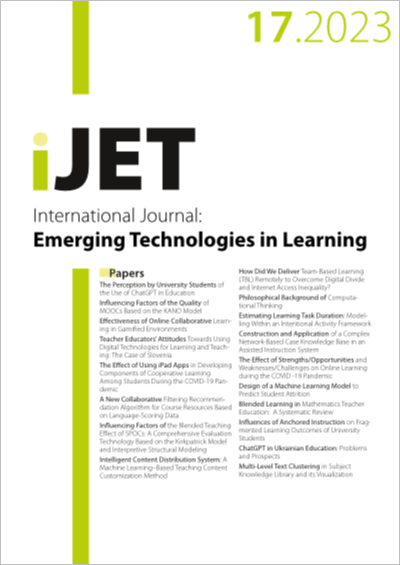Construction and Application of a Complex Network-Based Case Knowledge Base in an Assisted Instruction System
DOI:
https://doi.org/10.3991/ijet.v18i17.43487Keywords:
complex network, assisted instruction system, teaching cases, knowledge base constructionAbstract
With the development of the business administration major, case teaching has become an effective teaching method. However, a lot of case resources exist in the business administration field, and the correlation between these cases is complex, which poses challenges to teachers and students in terms of information overload and knowledge organization. Existing case knowledge bases in assisted instruction systems often have shortcomings in terms of knowledge relationship strength calculation, text semantic similarity calculation, hierarchical knowledge clustering, and propagation evolution. To solve these problems, this study proposed a method of constructing and applying a case knowledge base in an assisted instruction system based on a complex network. This method mainly includes three aspects: calculation and reasoning of ontology relationship strength, calculation of ontology text semantic similarity, and hierarchical knowledge clustering and propagation evolution in complex networks. Through a comprehensive study of these three aspects, a more efficient and intelligent case knowledge base in an assisted instruction system was constructed, which not only improved the teaching efficiency and quality of the business administration major but also had the potential to promote teaching in other disciplines and fields. In addition, this study also provided new perspectives and methods in related fields, which is of great significance for efficiently organizing and utilizing knowledge.
Downloads
Published
How to Cite
Issue
Section
License
Copyright (c) 2023 Nan Zhang (Submitter); Shanshan Wang, Xiangpeng Chang, Dong Ding

This work is licensed under a Creative Commons Attribution 4.0 International License.



